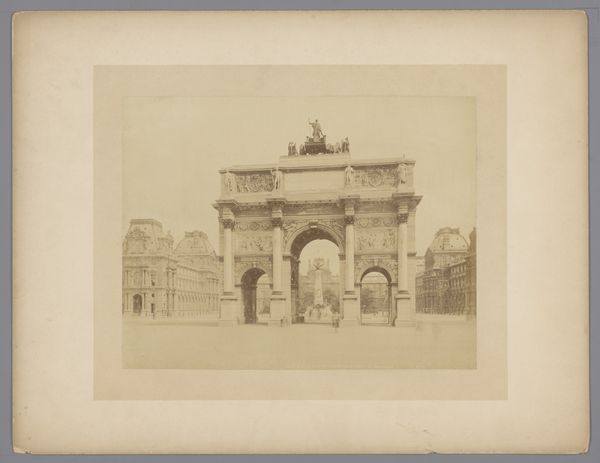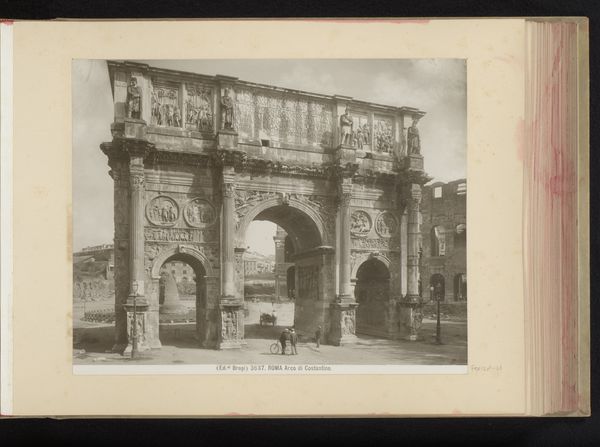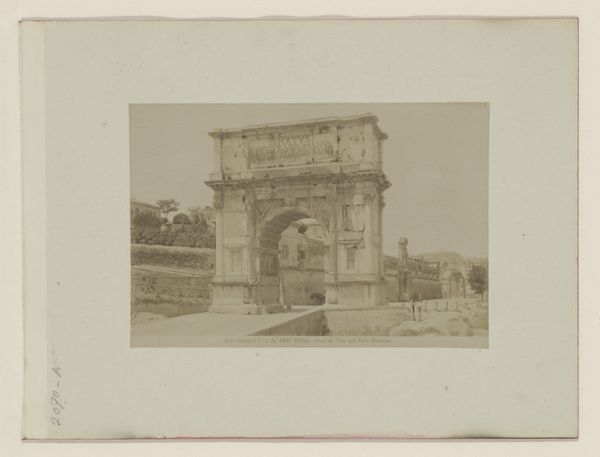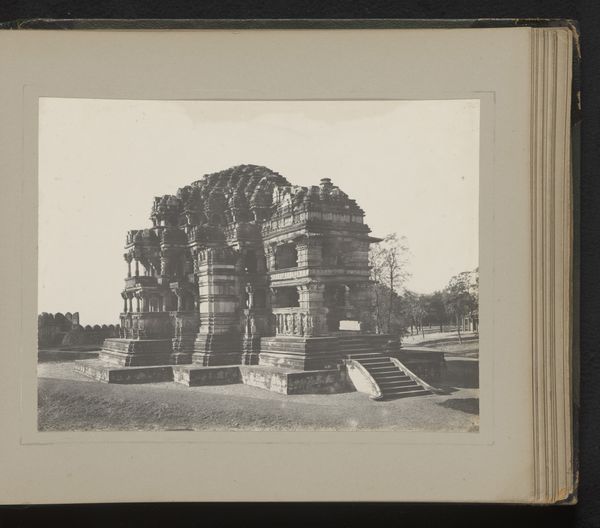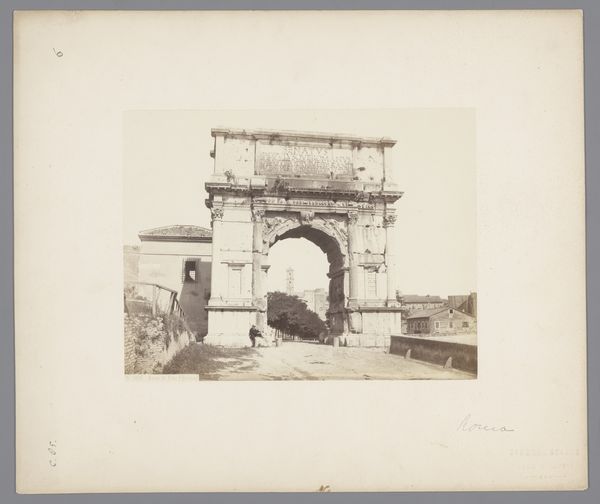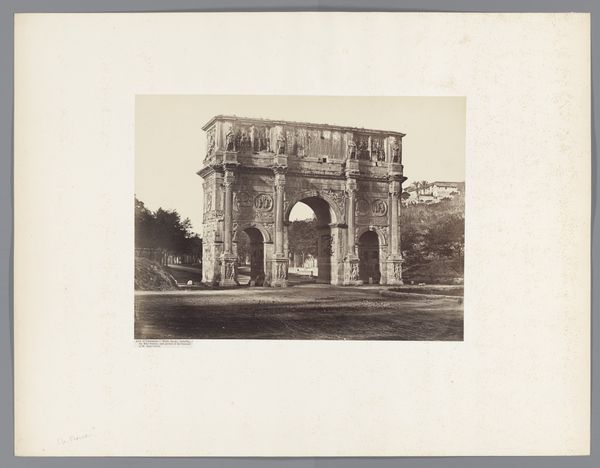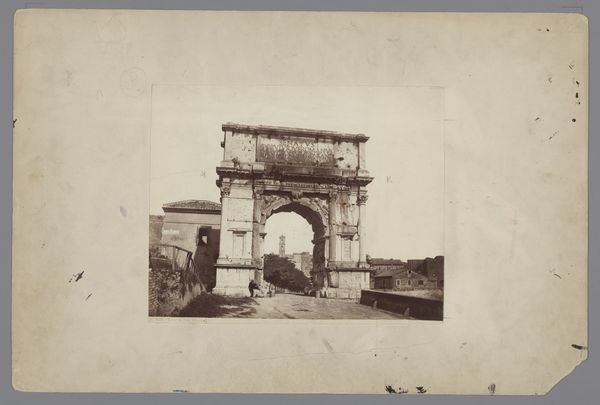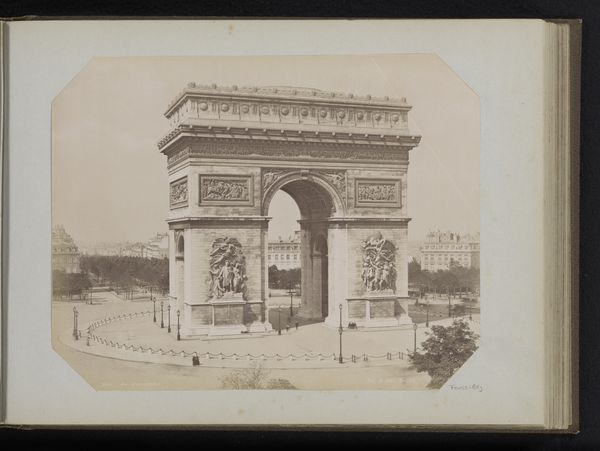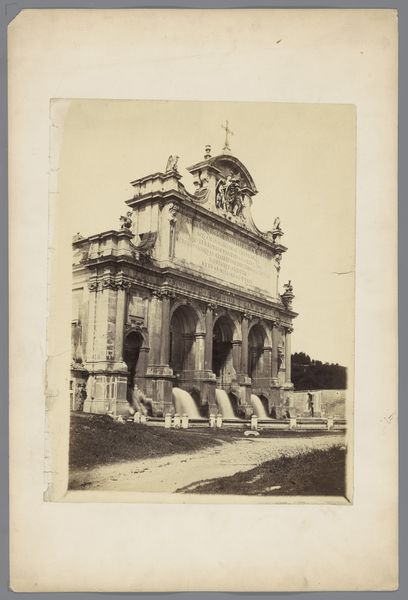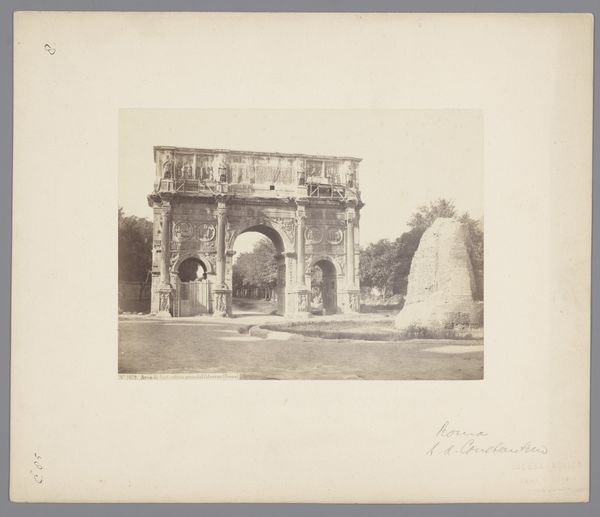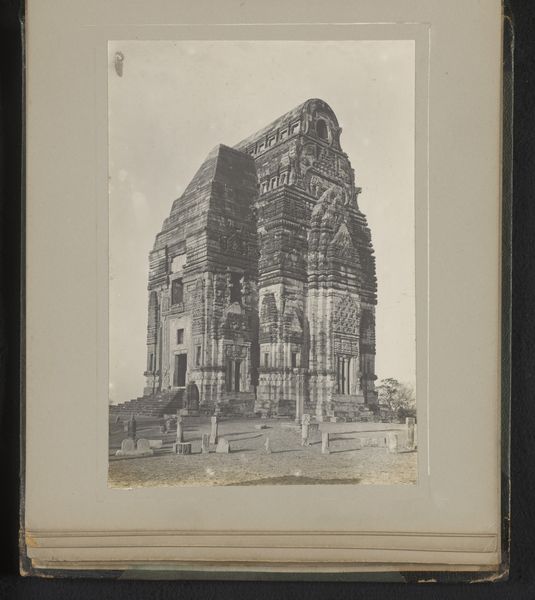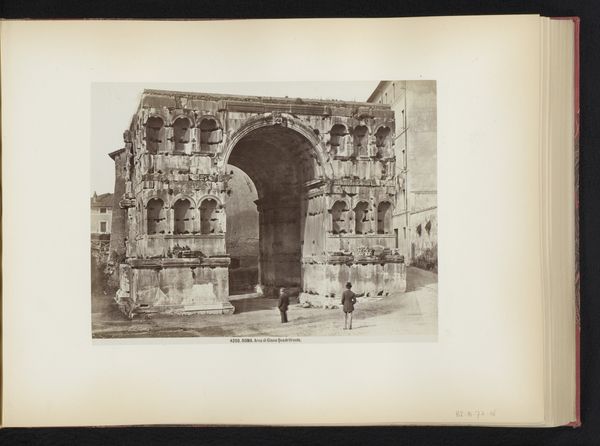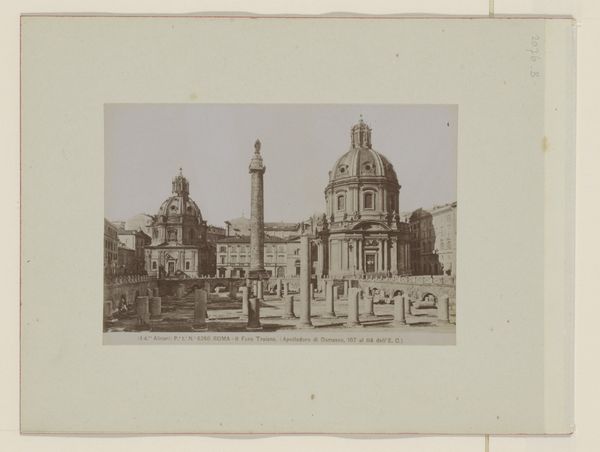
Gezicht op de Arc de Triomphe du Carrousel met het Louvre 1890 - 1898
0:00
0:00
Dimensions: height 258 mm, width 355 mm
Copyright: Rijks Museum: Open Domain
Curator: What strikes me immediately is the vastness of the plaza; the Arc de Triomphe du Carrousel stands centrally, flanked by the imposing Louvre, captured by Edouard Hautecoer. It's titled "Gezicht op de Arc de Triomphe du Carrousel met het Louvre." This albumen print dates from between 1890 and 1898. Editor: The tonality gives it such a detached, almost clinical feel, doesn’t it? The meticulous architecture is laid bare. It seems intended to convey order. The clarity is astonishing given the probable technical constraints. Curator: Well, this wasn’t just about documenting a scene. Consider the late 19th century in France. We see photography emerging as a powerful medium, and a fascination with documenting the changing urban landscape of Paris, a landscape still undergoing massive transformation. This image exists within a dialogue of colonialism, power, and representation. The arc itself commemorates Napoleon’s military victories, and the Louvre, a symbol of cultural dominance. The photo memorializes all of it. Editor: Indeed, one can analyze the photographic techniques here. The deliberate placement of the architectural elements creates a compelling, though symmetrical, composition, adhering almost perfectly to the rule of thirds. The perspective draws the viewer’s eye directly into the vanishing point at the end of the avenue, a standard in Neoclassical landscapes of the time. Curator: I agree, but can we consider who wasn’t in this picture? The absence of Parisians, for instance. Is it romantic or simply sterile? Who would be allowed into this city’s grand narratives of triumph? How do socioeconomic disparities factor into what’s recorded? Editor: But observe how light interacts with each stone and carving! There’s an implicit study of how light might reveal form and create texture that lends itself so well to that rigid orthogonal approach. It transcends mere political messaging, almost as if attempting a form of structural reduction. Curator: And yet, we circle back to power. Who controls how and what is seen, valued, remembered? Hautecoer's framing solidifies a certain narrative for future viewers, including ourselves. The print has become a lens through which we are positioned to understand a particular version of French identity and national pride. Editor: Perhaps; ultimately, though, as a semiotic exercise, one can spend hours simply decoding the sheer construction of each object and the spatial relationships in Hautecoeur's rendering and learn a great deal from this arrangement. Curator: Absolutely, but for me, understanding that these forms, too, were deployed strategically adds further layers to what this beautiful print has to say.
Comments
No comments
Be the first to comment and join the conversation on the ultimate creative platform.
